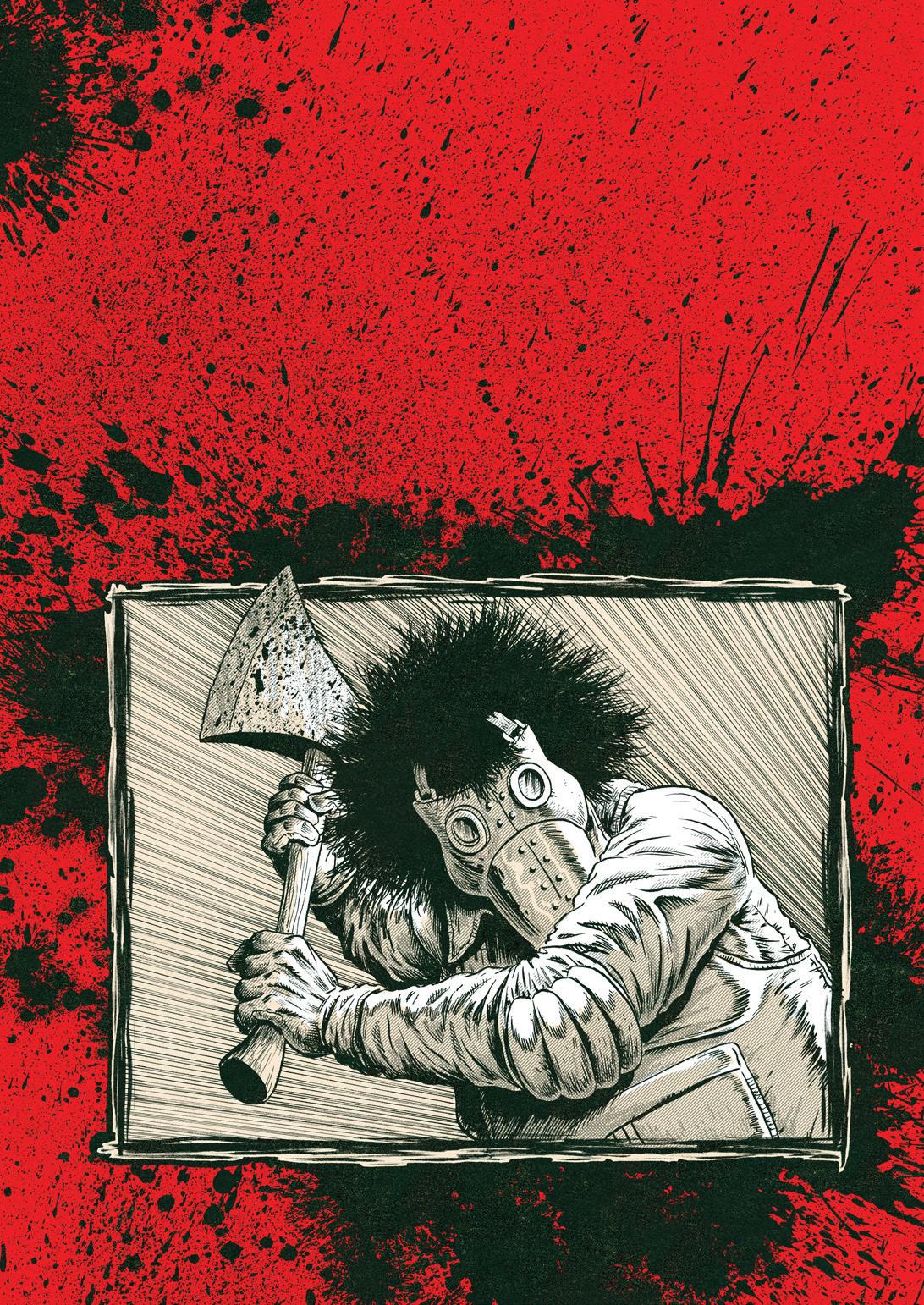THE ANTISOCIAL NETWORK

 ED PISKOR
ED PISKOR


2020 was supposed to be a production year for me anyhow, and the emergence of Covid-19 made damn sure I was gonna be getting some comics done during that calendar year so long as I didn’t catch the bug. All of the comic material here was done with that germy albatross around my neck and I think the work is weirdly better for it. I was so fucking uneasy, anxious, and thinking loops and loops of dark thoughts. Weren’t we all, though?
Red Room was something I was planning to launch into after Book 4 of Hip Hop Family Tree but a detour through the X-Men kept the project in my mind’s eye for three years longer than anticipated. I’m really glad for that. It’s good to let ideas percolate for a while before committing pen to paper. The project turned into something completely different than what I was originally intending it to be. I think my initial pitch was more procedural whodunnit with a “theater of the mind” approach, where all the fun stuff happens off camera. Fuck that noise. Vulgarity is my default setting. Can’t fight who I am.
I honestly think I’ve put together enough of a body of work that I can probably be profiled down to the year and month of my birth at this point. The material from my mental compost heap that Red Room employs is that of the kid who grew up with mom and pop video rental stores every two blocks, each containing robust horror sections that I’d completely pillage for a decade-and-a-half before online piracy and Netflix killed those enterprises. Blood, guts, exploitation, pot-boilers, and pulp. A hearty brew served straight-to-video and into the mind of a boy with a very overactive imagination. It just took 20 years to bloom into this piece of pulp you’re holding in your hands.
Growing up during the inertia of Stephen King’s powers in the ’80s and early ’90s also provided an insane amount of other very cheap, secondhand, paperback horror novels to comb through, all with unforgettable, provocative cover art! Books by people like Clive Barker, Richard Laymon, Jack Ketchum, J.R. Lansdale, John Skipp, and Rex Miller. Not to mention that when the HBO Tales From The Crypt TV show went

live in the early 1990s, the EC reprints began showing up in the (honest-to-goodness) grocery store and I was able to enjoy those comics at eight years-old the same way a kid in 1953 would have. How could a work like Red Room not exist with such formative influences?
I spent a lot of time working on X-Men: Grand Design listening through King’s bibliography via audiobook. It’s something I recommend. Sissy Spacek reads Carrie! C’mon! His 1981 thesis, Danse Macabre, was a huge influence in shaping Red Room as it very cogently marries multimedia examples of horror with the social fears and anxieties from which those works were created. I immediately began thinking about what cool horror possibilities were out there today that really haven’t been explored in a satisfactory way for me. The dark net was the first thing that came to mind. The idea of an untraceable internet where drug smugglers, gun runners, human traffickers, pedophiles, and hitmen reside with impunity is the perfect stuff for my horror fiction purposes.
Hip Hop Family Tree was a world building exercise on rails using real life to help set the pieces in motion. X-Men: Grand Design was world building with some fictional wiggle room to play with. World building is something I wanted to bring into Red Room and that would have been a tough approach in the graphic novel zeitgeist. Red Room needed to be a classic pamphlet comic.
It’s not a controversial opinion to suggest that the classic pamphlet comic format has been grossly misused for maybe 20 years or so. The stories are spread so thin in order to compile six issues of content into expensive trade paperbacks that they don’t provide very satisfying reading experiences for the price point. Rather than complain, I figured I’d do the opposite of all the things I dislike about the abuse of my favorite artistic medium and try to make some monthly comics that you’d be happy to trek to the comics shop to scoop up every four weeks or so. That said, I also want to make this book collection its own satisfying experience on top of that. Lots of spinning plates in this comic book game.
The visual approach to Red Room has its foundation rooted in a visual approach that burned like a supernova in the 1980s and early ’90s. Gritty, outlaw, black-and-white comics work by the likes of James O’Barr, Tim Vigil, Tim Tyler, Guy Davis, Vince Locke, Michael Zulli, Kevin Eastman, Eric Talbot, and more. Duotone grayscaling was a piece of connective tissue that links all of these raw and organic artists. The subject matter they often chose to draw echoes the Red Room vibe as well.
This is not a graphic novel you’re holding in your hands. It’s a collection of four comic books that each tell their own tale but if you read them all you will see the bigger world I’m developing. Much like our own




